Popular games for platform Dragon 32/64

Chuckie Egg is an action platformer featuring a turn-based multiplayer mode. As Hen-House Harry, the player must collect the twelve eggs positioned in each level, before a countdown timer reaches zero. In addition there are piles of seed which may be collected to increase points and stop the countdown timer for a while. The player starts with five lives, and an extra life is awarded every 10,000 points.
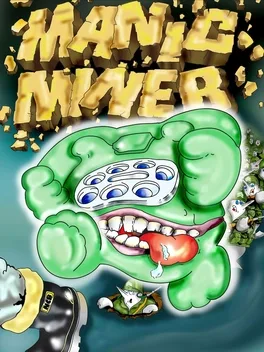
Manic Miner is a platform video game originally written for the ZX Spectrum by Matthew Smith and released by Bug-Byte in 1983 (later re-released by Software Projects). It is the first game in the Miner Willy series and among the early titles in the platform game genre. The game itself was inspired by the Atari 800 game Miner 2049er. It has since been ported to numerous home computers and video game consoles.
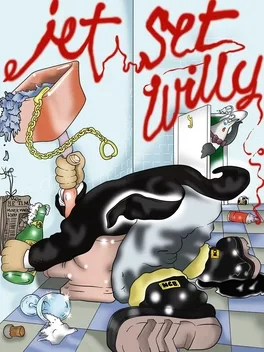
Jet Set Willy is a flip-screen platform game in which the player moves the protagonist, Willy, from room to room in his mansion collecting objects. Unlike the screen-by-screen style of its prequel, the player can explore the mansion at will.

Moon Cresta is an arcade game released in 1980 by Nichibutsu. A moving starfield gives the impression of vertical scrolling, but the game is a fixed shooter in the vein of Namco's Galaxian. Incentive Software published a version of this arcade game for many 8-bit home computers of the time. Dempa also released a port of both Moon Cresta and Terra Cresta for the X68000. It was also released on the Wii Virtual Console in Japan on March 9, 2010 and PlayStation 4 (Arcade Archives) in 2014.
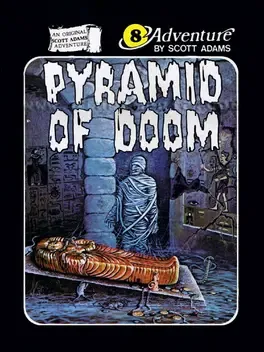
In this text adventure you are on a treasure hunt in an Egyptian pyramid.
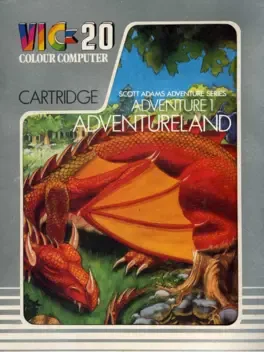
A text based Adventure Game for the TRS-80, later enhanced with visual scenes in various ports. Only allowed 2-Word input and was largely based on Colossal Cave Adventure.
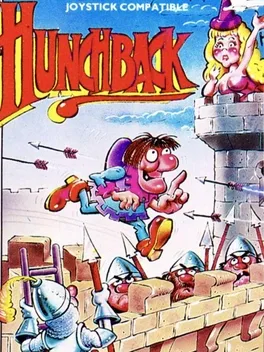
The game is set on a castle wall. The player must cross the screen from left to right avoiding obstacles in order to ring the bell at the far right. Obstacles include pits which must be swung over on a long rope, ramparts which must be jumped (some of which contain knights with spears) and flying fireballs and arrows (to be ducked or jumped). Eventually, after completing a number of screens, the player must rescue Esmeralda. If this final screen is completed, the game begins again at a faster speed.
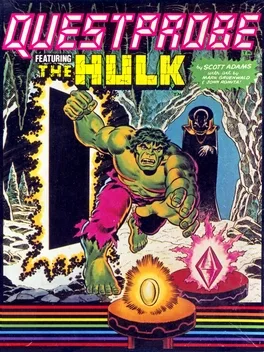
Questprobe featuring The Hulk is a graphic adventure video game. It is the first entry in Questprobe, an intended series of graphic adventure games that only released three instalments before the developer's bankruptcy. The game's narrative follows the Marvel superhero Hulk and his human alter-ego Bruce Banner (in their first video game appearance), who must explore the mysterious lair of the Chief Examiner.
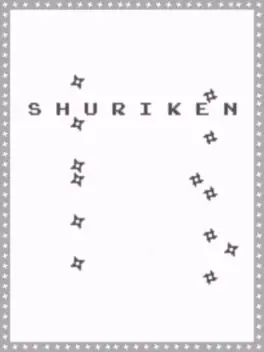
Shuriken is somehow inspired by Pac-man and Pengo.
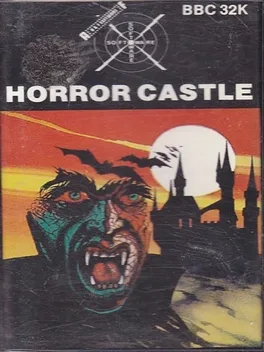
Horror Castle is a text adventure. Starting in the forest outside a dark castle, the player must find their way into the castle and rescue the princess. Numerous clues, dangers, and traps litter the castle and its surrounding grounds and dungeon.
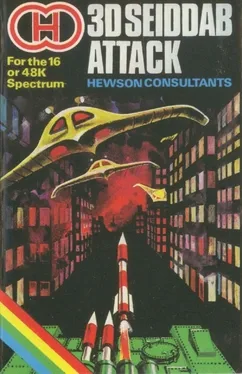
The Seiddab Trilogy is a series of video games designed by Steve Turner (as Graftgold) for the ZX Spectrum and published by Hewson Consultants. It consists of 3D Space-Wars (1983),[1] 3D Seiddab Attack (1984)[2] and 3D Lunattack.[3] All three games were later published together as "The Seiddab Trilogy" by Hewson for the Rotronics Wafadrive.[4] The series name is derived from the word "baddies" being spelt in reverse. Astroclone (1985), also programmed by Turner and featuring the Seiddab, is part of this series.[5]
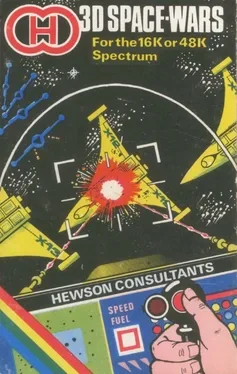
3D Space Wars is an action game for both the ZX Spectrum and the Dragon 32/64
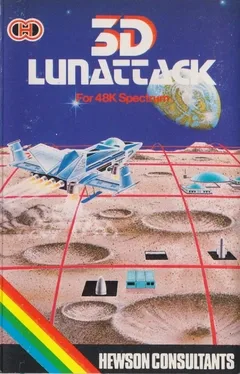
You attack a moonbase of the dreaded Seiddabs.

Burger Time clone.
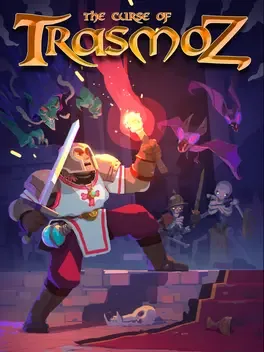
When the full moon crowns the night of all saints, a brave hero will break the curse forever; he will sanctify the place with the fire of wandering souls, when they are liberated. You are the hero chosen to fulfill this dangerous mission... Will you be able to release TRASMOZ from its curse before the sun rises again?
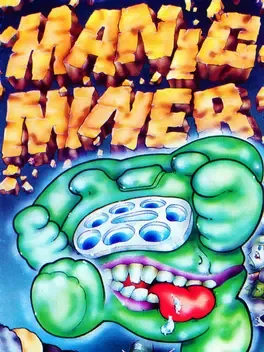
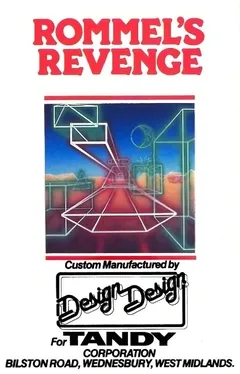
"This is probably the best version yet of the well known arcade original ‘Battle Zone’ and is, of course, similar to Artic’s ‘3D Combat Zone’. In one sense it’s much better — the flat plain is well landscaped and teeming with buildings, radar towers and telegraph poles. The missiles, once fired, seemed to travel at a realistic speed. In another sense it’s not so good — the enemy tanks don’t appear as frequently and there aren’t any flying saucers to contend with. On the other hand the enemy tanks aren’t so over-intelligent at avoiding your fire, so you get a better sense of achievement! Rather poor sound and the hollow 3D graphics are colourless, but it’s fun just wandering round looking at the buildings. Watch out for the special loader routine which makes it look as though the program isn’t loading properly."[2]

This is a text based game that has elements from a multiple genres dungeon crawl, puzzle, logic challenge, and even resource management. The back story is about a bad wizard who's stolen a magic chalice and you play the plucky adventurer who has to get it back. The bad guy is hiding in the ancient burial grounds, or barrows. The game is based on a map of the barrows in which there are 40 or so rooms. You are dropped randomly into a room. In other rooms are gnomes, trolls, dragons etc and in one room is the wizard. The game is played by moving from room to room exploring. You may view connecting rooms. You may raise a magic wall in an adjacent room. However you have only 400 magic points and viewing or raising a wall costs points so it's important to find the wizard before points run out. The game is a text game. There is only one graphic which is the map that shows how the rooms are connected.

Destroy all eggs! With that as your only instructions, you are thrown into a room filled with pterodactyl eggs. The controls are similar to many versions of Robotron, in that you shoot in whichever direction you are walking. The task of destroying the eggs seems easy until they begin to hatch. The new-born pterodactyls are not only lethal, but they lay more eggs, prolonging your misery. The game runs in black and white high resolution mode and uses small characters, only a character tall.
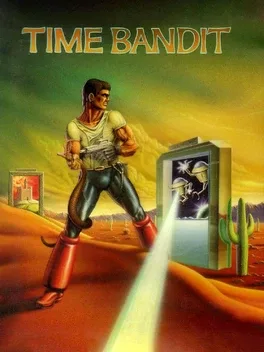
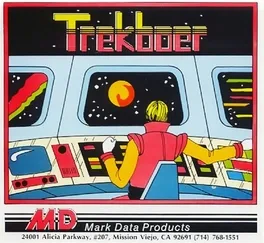
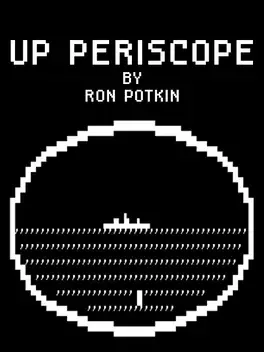
You play as a fleet commander and your task is to escort a convoy from one end of the map to the other within a set time limit, with at least half the convoy vessels surviving the U-boat wolfpack hiding in the depths. The fleet commander has six destroyers for protecting the convoy and clearing the sea of submarines. The ships are equipped with sonar to discover the submarines and a number of depth charges and torpedoes to destroy them with. Only a limited amount of moves may be made during each turn.
The Wizard of Akyrz is the eighth game in the Mysterious Adventures series. The player begins in the royal palace, where the king asks him to save his daughter from an evil wizard. If the player should succeed, his reward will be priceless.

This text adventue is the conclusion of Savage Island, Part I. You are still trying to find the secret of the island in the pacifuc ocean. A code sheet which came with game will enable you to solve mystery concerning the island.